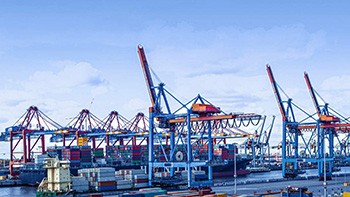Major progress in 7 railways: multiple proposed lines confirmed to start construction in June
Recently, China's transportation infrastructure sector has reached a major milestone - six strategic railway projects will be launched in mid month. The construction project presents three major highlights: a passenger dedicated line with a design speed of 350 kilometers per hour, a cross sea immersed tube tunnel with new technical standards, and a complex geological section that crosses karst landforms. The "steel artery" with a total length of over 1500 kilometers will connect the Yangtze River Delta, Pearl River Delta, and southwestern hinterland.
On June 1, 2025, the Guangdong section of the Hepu Zhanjiang high-speed railway, which connects Guangdong and Guangxi provinces, will officially start the main construction project, marking the entry of this strategic coastal high-speed railway channel into the full line tackling stage. The total length of its main line is 76.6 kilometers, passing through Lianjiang, Suixi and other places. After completion, the travel time from Zhanjiang to Guangzhou will be shortened to less than 2 hours.
As a key project for the integration of transportation in the Yangtze River Delta in 2025, the main construction of the northeast connecting line of Yangzhou East Station will officially start in June. Although this 12.4-kilometer line is short, it undertakes multiple key missions in the high-speed rail strategic map.
With the official approval of the land pre-approval for the Hunan section, the obstacles to the construction of the entire Qianjiang Jishou section of the Chongqing Hunan high-speed railway have been fully cleared, marking that this strategic passage spanning Chongqing and Hunan is about to enter the substantive construction stage.
Among the projects that have already started construction, the progress of the Shenbai high-speed railway and the Xiangjing high-speed railway is particularly remarkable. The former crosses the permafrost area of Changbai Mountain and the alluvial plain of Liaohe River, and needs to overcome the problem of frost heave and thaw settlement; The latter faced the contradiction between the protection of Jingzhou ancient city and the selection of railway lines, and ultimately adopted a combination of elevated bridges and tunnels to cross the urban area.
More noteworthy is the Wenzhou Fuzhou high-speed railway, although it has not yet officially started construction, its preliminary work has made breakthroughs: the pre-approval of land use in the Zhejiang section, the evaluation of navigation channels has passed the review, and the demonstration of sea area use has entered the final stage. After the completion of this 350 kilometer per hour high-speed railway, the time and space distance between Wenzhou and Fuzhou will be compressed to one hour, completely rewriting the coastal transportation map of Zhejiang and Fujian.




